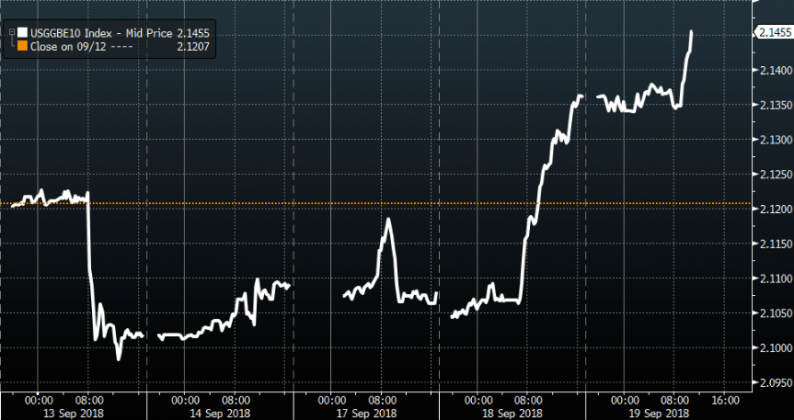Is the reflation trade back?
You might be inclined to think so based on the rise in 10Y yields over the past couple of sessions and more specifically, based on breakevens:

(Bloomberg)
A lot of this appears to be down to stimulus hopes in China and, of course, the fillip crude got on Tuesday from news that the Saudis are “comfortable” with prices at $80. Here’s the BCOM:

(Bloomberg)
On the China front, Bloomberg’s Luke Kawa had a great line on Wednesday morning with regard to Li’s overnight comments on the yuan. To wit, from Luke’s Twitter:
It’s artistically fitting that Li Keqiang was the one to say China won’t devalue its currency to boost growth. Because what they probably *will* do to prop up the economy entails pushing the Li Keqiang Index, a gauge of the “old” industrial economy, higher.
But is the reflation trade truly rescued? Probably not, according to Nedbank’s Neels Heyneke and Mehul Daya.
Regular readers are familiar with the Nedbank duo for their work this year on the looming dollar liquidity crunch. In their latest note, they argue that rumors of the reflation trade’s demise are not greatly exaggerated.
To support their contention, Heyneke and Daya cite their “reflation trade indicator” which is basically just an equal-weighted index of positioning in commodities, equities, bonds, EM FX, gold, the VIX and the dollar.
“The indicator gives us a reasonable sense of investor confidence towards risk assets in general, ie, bullish/bearish sentiment towards risk assets”, they write, in a piece dated Tuesday. Here’s the indicator rolling over:

(Nedbank)
“Our view, supported by investor positioning towards risk assets, was at an extreme [and] this made us pay special attention because such extremes can often be turning points”, Nedbank writes, describing their thought process in January. Heyneke and Daya continue as follows:













Leave A Comment